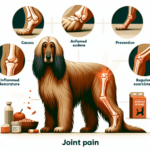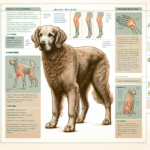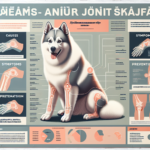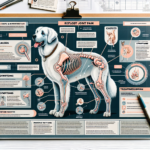Belgian Laekenois Joint Pain: Causes, Symptoms, Prevention, and Treatment
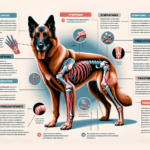
Introduction
The Belgian Laekenois is one of the four varieties of the Belgian Shepherd Dog, known for its distinctive rough coat and keen intelligence. Originating from Belgium, this breed was historically used for herding and guarding livestock. The Laekenois is characterized by its wiry, fawn-colored coat, alert expression, and robust build. Known for their loyalty and protective nature, these dogs are highly valued as working dogs and companions.
Like many breeds, the Belgian Laekenois is prone to certain health issues, with joint pain being a significant concern. Joint health is crucial for this breed due to their active lifestyle and working heritage. Ensuring the well-being of their joints can help maintain their quality of life and prolong their active years.
Breed-Specific Joint Pain Risks
Genetic Predisposition
The Belgian Laekenois, like other large breeds, is genetically predisposed to joint-related issues such as hip dysplasia, elbow dysplasia, and arthritis. Hip dysplasia is a common condition where the hip joint does not fit properly into the hip socket, leading to pain and mobility issues. Elbow dysplasia involves abnormal development of the elbow joint, causing lameness and discomfort. Arthritis, a degenerative joint disease, can also affect this breed, leading to chronic pain and stiffness.
Age-Related Risks
As the Belgian Laekenois ages, the risk of developing joint pain increases. Typically, signs of joint issues may start to appear in middle age, around 5-7 years old. However, some dogs may show symptoms earlier, especially if they have a genetic predisposition or have experienced joint injuries. Regular veterinary check-ups are essential to monitor joint health as the dog ages.
Activity Level and Joint Stress
The Belgian Laekenois is an active and energetic breed, often involved in activities such as herding, agility, and obedience training. While their high activity level keeps them fit, it can also contribute to joint stress. Repetitive motions, high-impact activities, and strenuous exercise can exacerbate joint issues, making it crucial to balance their activity levels with adequate rest and recovery.
Common Symptoms of Joint Pain in Belgian Laekenois
General Symptoms
- Limping: One of the most noticeable signs of joint pain is limping or favoring one leg over another.
- Stiffness: Dogs may show stiffness, especially after resting or during cold weather.
- Reluctance to Move: A dog in pain may be hesitant to jump, climb stairs, or engage in physical activities they once enjoyed.
- Swelling: Swelling around the joints can be a sign of inflammation and pain.
- Behavioral Changes: Irritability, lethargy, or changes in appetite can also indicate discomfort.
Breed-Specific Symptoms
In the Belgian Laekenois, joint pain may manifest as a reluctance to perform tasks they were trained for, such as herding or agility exercises. Owners may notice a decrease in their dog’s enthusiasm for physical activities or a change in their gait.
When to Consult a Vet
If you observe any of the above symptoms, it is essential to consult a veterinarian promptly. Early diagnosis and intervention can prevent further deterioration and improve the dog’s quality of life. Regular veterinary check-ups are also crucial for early detection of joint issues.
Preventive Measures for Joint Health
Exercise Recommendations
Maintaining an appropriate exercise routine is vital for the Belgian Laekenois. Low-impact activities such as swimming and controlled leash walks can help keep their joints healthy without causing excessive stress. Avoid high-impact activities like jumping or running on hard surfaces, especially for young puppies and older dogs.
Dietary Suggestions
A balanced diet rich in essential nutrients can support joint health. Foods containing glucosamine, chondroitin, and omega-3 fatty acids are beneficial for joint maintenance. Consider incorporating supplements specifically designed for joint health, but always consult your veterinarian before adding any new supplements to your dog’s diet.
Weight Management
Maintaining a healthy weight is crucial for reducing joint stress. Obesity can exacerbate joint issues and lead to additional health problems. Monitor your dog’s weight and adjust their diet and exercise routine as needed to keep them at an optimal weight.
Early Screening and Monitoring
Regular veterinary check-ups and early screening for joint issues can help catch problems before they become severe. X-rays and other diagnostic tools can identify joint abnormalities early, allowing for timely intervention and management.
Treatment Options for Joint Pain
Non-Surgical Treatments
Non-surgical treatments for joint pain include medications such as non-steroidal anti-inflammatory drugs (NSAIDs) to reduce pain and inflammation. Physical therapy, including exercises and hydrotherapy, can improve joint mobility and strength. Lifestyle adjustments, such as providing a comfortable resting area and avoiding strenuous activities, can also help manage pain.
Surgical Options
In severe cases, surgical interventions may be necessary. Common surgeries for joint issues include hip replacement, arthroscopy, and joint fusion. These procedures can significantly improve the dog’s quality of life, but they come with risks and require a thorough discussion with your veterinarian.
Alternative Therapies
Alternative treatments such as acupuncture, hydrotherapy, and massage can provide additional relief for joint pain. These therapies can complement traditional treatments and offer a holistic approach to managing joint health.
Lifestyle and Management Tips
Daily Care Routine
A daily care routine for a Belgian Laekenois with joint pain should include gentle exercise, a balanced diet, and regular rest periods. Incorporate low-impact activities like swimming and controlled walks to keep them active without causing joint stress.
Modifying the Home Environment
Making the home environment more comfortable can help alleviate joint pain. Consider using ramps instead of stairs, providing orthopedic beds, and ensuring that food and water bowls are at an accessible height.
Long-Term Management
Long-term management of joint pain involves regular veterinary check-ups, consistent monitoring of symptoms, and adjusting the care routine as needed. Keeping the dog active and engaged with appropriate activities can help maintain their quality of life.
FAQs About Belgian Laekenois and Joint Pain
What are the early signs of joint pain in Belgian Laekenois?
Early signs include limping, stiffness, reluctance to move, and behavioral changes such as irritability or lethargy.
Can joint pain in Belgian Laekenois be prevented?
While genetic predisposition cannot be entirely prevented, maintaining a healthy weight, providing a balanced diet, and ensuring appropriate exercise can reduce the risk of joint pain.
Are there specific supplements that can help with joint health?
Supplements containing glucosamine, chondroitin, and omega-3 fatty acids can support joint health. Always consult your veterinarian before adding supplements to your dog’s diet.
When should I consult a vet about my dog’s joint pain?
If you notice any signs of joint pain, such as limping, stiffness, or reluctance to move, consult your veterinarian promptly for a thorough evaluation and appropriate treatment plan.
Conclusion
Joint health is a critical aspect of caring for a Belgian Laekenois, given their active lifestyle and genetic predisposition to joint issues. By understanding the causes, symptoms, preventive measures, and treatment options for joint pain, owners can ensure their dogs lead healthy and active lives. Regular veterinary check-ups, a balanced diet, appropriate exercise, and early intervention are key to maintaining joint health and enhancing the quality of life for this remarkable breed.
Taking proactive steps to monitor and manage joint health can make a significant difference in the well-being of your Belgian Laekenois. Always consult your veterinarian for personalized advice and treatment options tailored to your dog’s specific needs.

